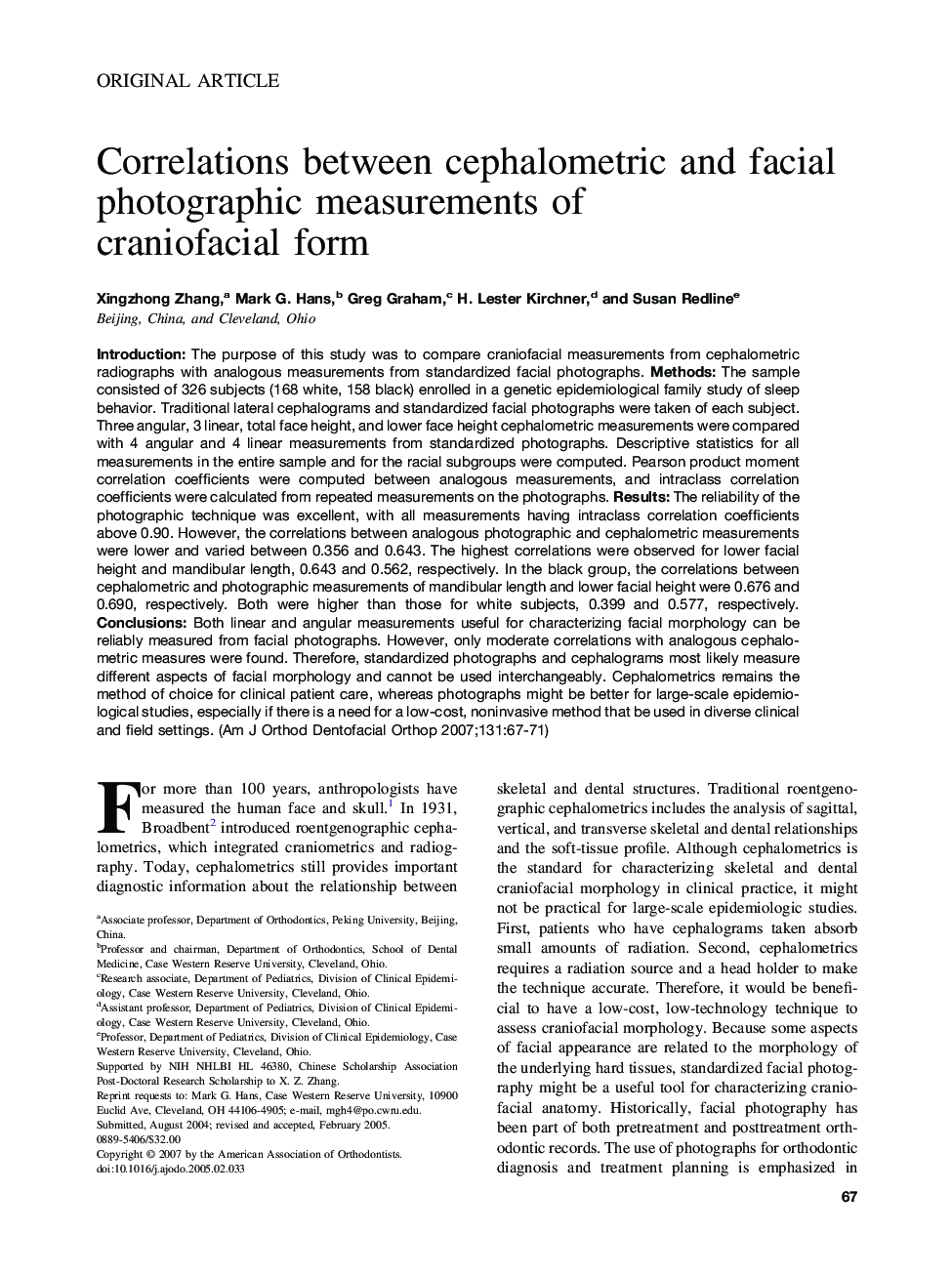| Article ID | Journal | Published Year | Pages | File Type |
|---|---|---|---|---|
| 3120465 | American Journal of Orthodontics and Dentofacial Orthopedics | 2007 | 5 Pages |
Introduction: The purpose of this study was to compare craniofacial measurements from cephalometric radiographs with analogous measurements from standardized facial photographs. Methods: The sample consisted of 326 subjects (168 white, 158 black) enrolled in a genetic epidemiological family study of sleep behavior. Traditional lateral cephalograms and standardized facial photographs were taken of each subject. Three angular, 3 linear, total face height, and lower face height cephalometric measurements were compared with 4 angular and 4 linear measurements from standardized photographs. Descriptive statistics for all measurements in the entire sample and for the racial subgroups were computed. Pearson product moment correlation coefficients were computed between analogous measurements, and intraclass correlation coefficients were calculated from repeated measurements on the photographs. Results: The reliability of the photographic technique was excellent, with all measurements having intraclass correlation coefficients above 0.90. However, the correlations between analogous photographic and cephalometric measurements were lower and varied between 0.356 and 0.643. The highest correlations were observed for lower facial height and mandibular length, 0.643 and 0.562, respectively. In the black group, the correlations between cephalometric and photographic measurements of mandibular length and lower facial height were 0.676 and 0.690, respectively. Both were higher than those for white subjects, 0.399 and 0.577, respectively. Conclusions: Both linear and angular measurements useful for characterizing facial morphology can be reliably measured from facial photographs. However, only moderate correlations with analogous cephalometric measures were found. Therefore, standardized photographs and cephalograms most likely measure different aspects of facial morphology and cannot be used interchangeably. Cephalometrics remains the method of choice for clinical patient care, whereas photographs might be better for large-scale epidemiological studies, especially if there is a need for a low-cost, noninvasive method that be used in diverse clinical and field settings.
